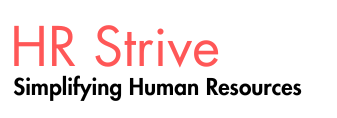In today’s fast-evolving workplace, HR isn’t just a support function—it’s a strategic partner. And like any strategic partner, it needs tools to assess, align, and advance organizational goals. Enter the HR audit and Organizational Effectiveness & Development (OED): two powerful mechanisms that help HR professionals diagnose performance gaps and prescribe meaningful change.
🧪 The HR Audit: A Strategic Health Check
Think of an HR audit as a wellness exam for your organization’s people practices. It’s not just about ticking compliance boxes—it’s about uncovering blind spots, benchmarking performance, and fostering a culture of continuous improvement.
Here’s how the process typically unfolds:
1. Define the Scope
Are we auditing everything or zooming in on a specific policy? Clarity here sets the tone for relevance and impact.
2. Craft the Audit Questionnaire
This is your diagnostic tool—a structured set of questions that ensures consistency, depth, and objectivity.
3. Collect the Data
Using the questionnaire as a guide, data is gathered efficiently and with minimal disruption. Precision matters.
4. Benchmark the Findings
How do we stack up? Results are compared against internal standards, legal requirements, or industry best practices.
5. Share the Results
Transparency is key. Findings are shared with leadership, and issues are prioritized by risk level—high, medium, or low.
6. Develop Action Plans
Recommendations are translated into action. Ownership is assigned, timelines are set, and follow-through is monitored.
7. Foster Continuous Improvement
Audits aren’t one-and-done. They’re part of a cycle—plan, act, check, improve. That’s how excellence becomes habit.
🧠 Organizational Effectiveness & Development: The HR Physician’s Toolkit
When leaders ask, “Is our organization fit to achieve its goals?” HR steps in as the organizational physician. OED is the diagnostic and treatment plan rolled into one.
🔍 Asking the Right Questions:
Where are we now?
Where do we want to go?
What’s holding us back?
How must we change to move forward?
These questions form the backbone of any OED initiative. They shift the focus from symptoms to root causes—and from reactive fixes to proactive transformation.
💡 What OED Delivers:
Organizational Interventions: Changes in structure, culture, competencies, technology, or processes.
Team Interventions: Conflict resolution, alignment, and performance enhancement.
Stakeholder Engagement: Collaborative diagnosis and co-designed solutions.
OED isn’t just about fixing problems—it’s about unlocking potential. It’s the strategic lever that turns insight into impact.
🌱 Final Thought: From Audit to Action
HR audits and OED aren’t just tools—they’re mindsets. They reflect a commitment to transparency, accountability, and growth. When done right, they don’t just improve systems—they elevate people.

No comments:
Post a Comment